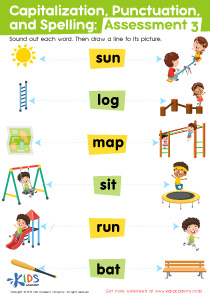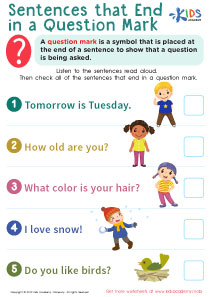Understanding prefixes Writing Worksheets for Ages 4-9
6 filtered results
-
From - To
Explore our "Understanding Prefixes Writing Worksheets" designed specifically for children ages 4-9! These engaging worksheets help young learners grasp the concept of prefixes, enhancing their vocabulary and spelling skills. Through fun activities, children will learn how prefixes change the meanings of root words. Each worksheet features colorful illustrations and simple instructions, making it easy for kids to practice independently or with guidance. Perfect for home or classroom use, these materials promote language development while ensuring an enjoyable learning experience. Ignite your child's enthusiasm for words and watch their confidence soar with our thoughtfully crafted prefixes worksheets!
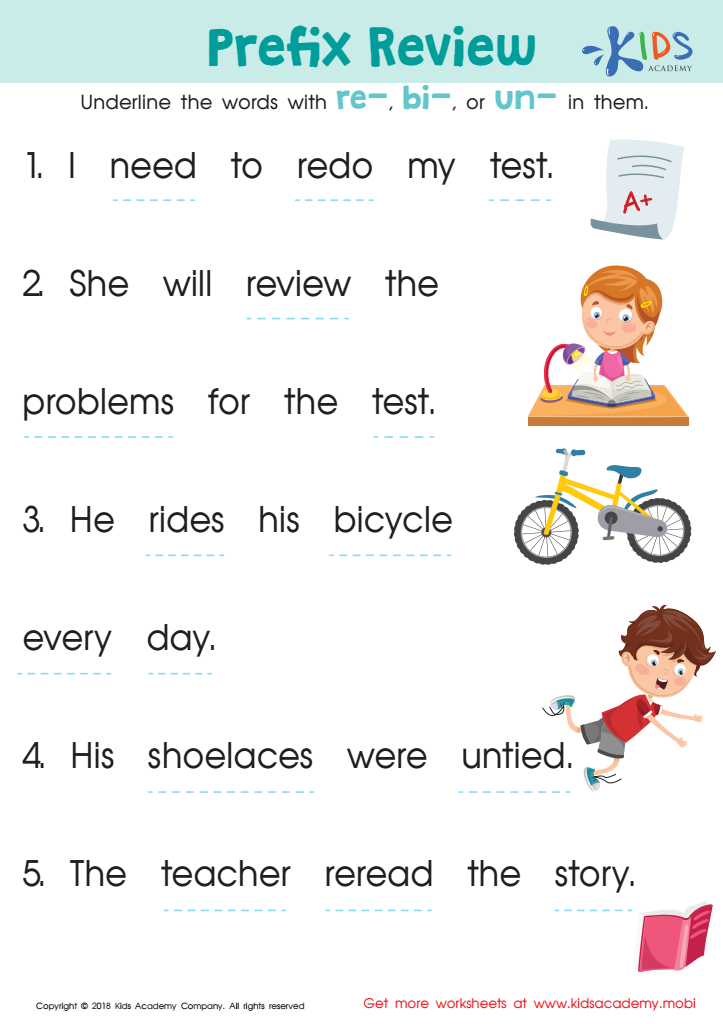

Prefix Review Worksheet
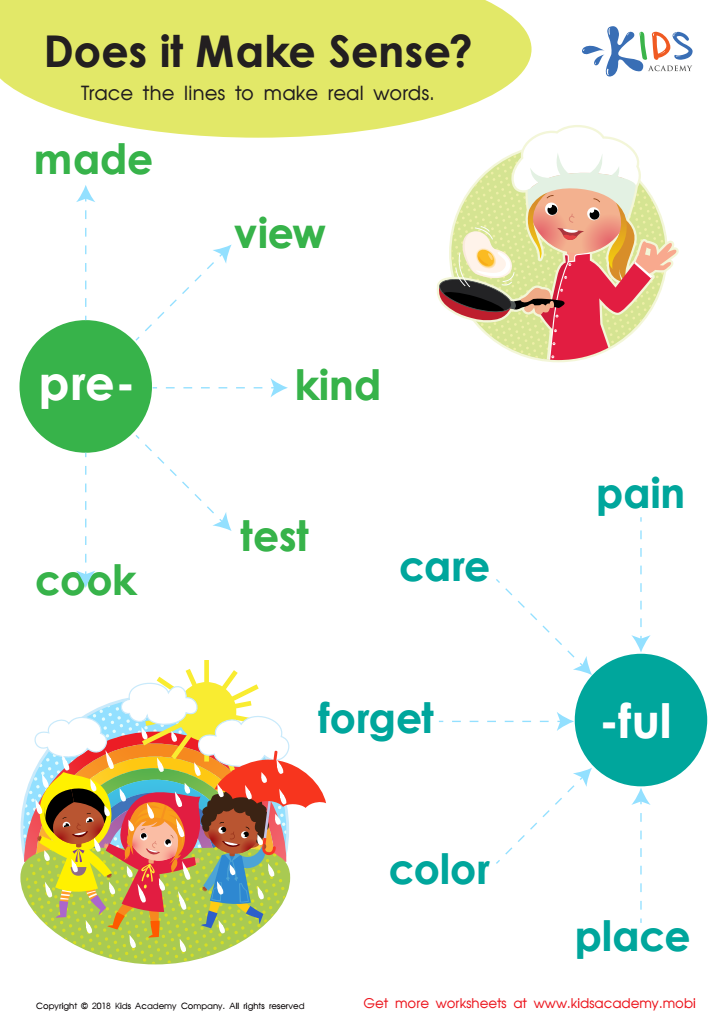

Prefix pre– and Suffix ful– Worksheet
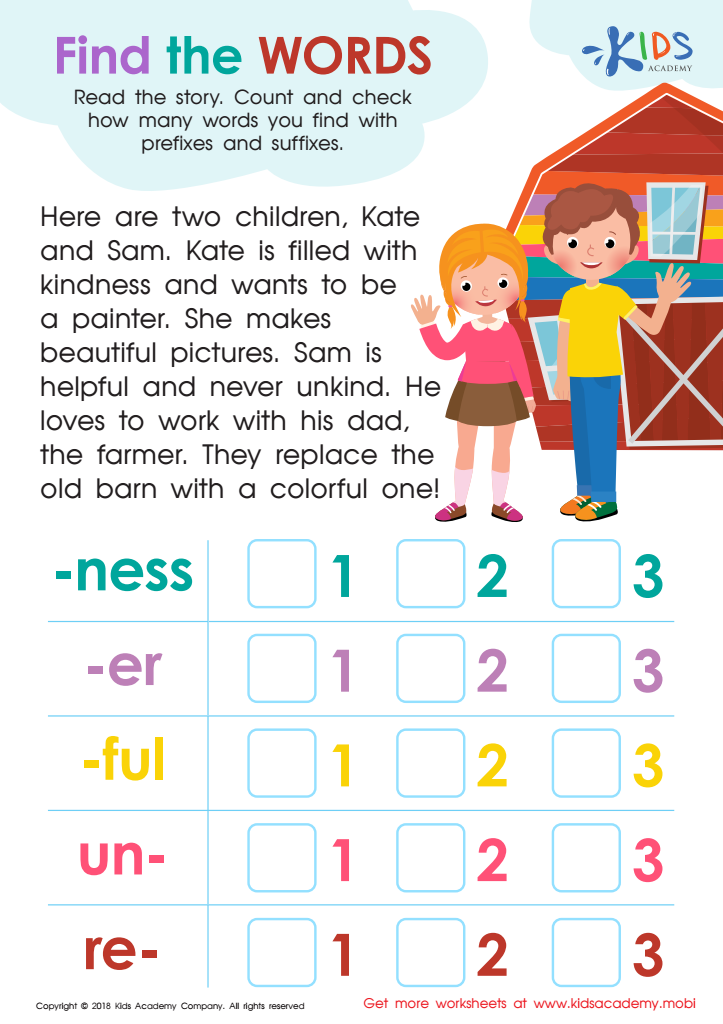

Prefix and Suffix Worksheet For Grade 3
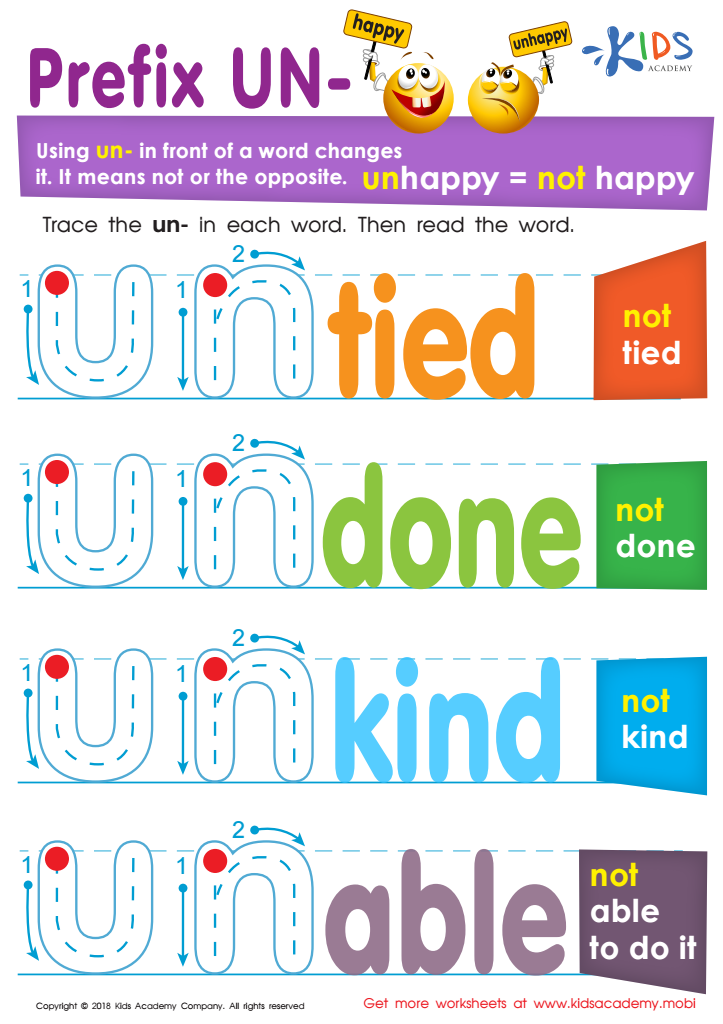

Prefix Un- Worksheet
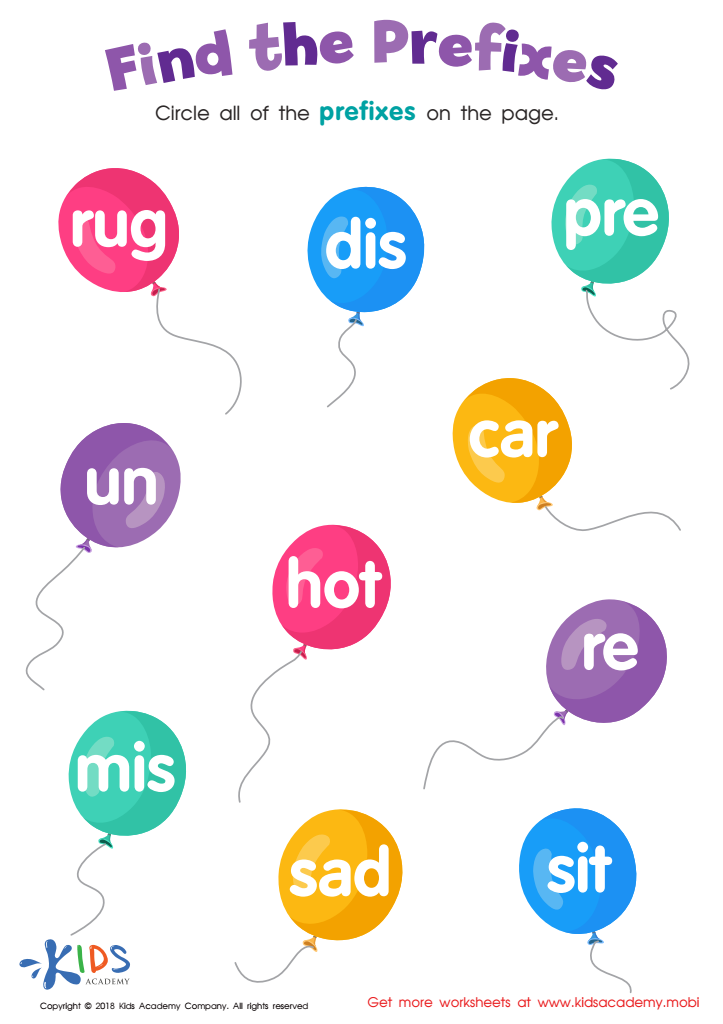

Reading: Find the Prefixes Worksheet
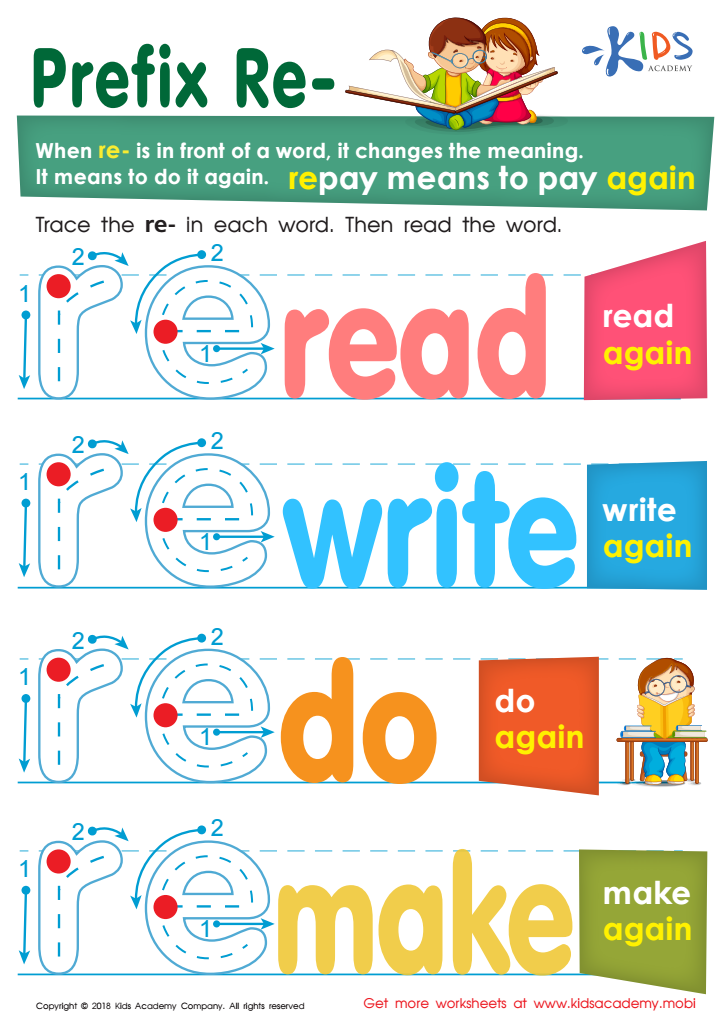

Prefix Re- Worksheet
Understanding prefixes is vital for young learners aged 4-9 as it lays the foundation for language development, reading comprehension, and vocabulary expansion. When children learn about prefixes—such as "un-", "re-", and "dis-"—they gain insight into how words can be modified to alter their meanings. This knowledge not only helps in decoding unfamiliar words but also fosters a sense of wordplay and creativity, encouraging them to explore language actively.
Parents and teachers should emphasize prefixes during early education as it enhances literacy skills. For instance, if a child knows that "happy" can become "unhappy," they can easily deduce meanings of similar words, boosting their confidence in reading. Additionally, this understanding fosters critical thinking; children learn to analyze the components of words, facilitating deeper comprehension of texts.
Moreover, introducing prefixes in engaging and age-appropriate ways, such as through games or interactive activities, can strengthen parent-child or teacher-student bonds. Ultimately, teaching prefixes is an essential step in nurturing proficient readers who appreciate the richness of language while developing the essential skills needed for future academic success. The early investment in vocabulary through familiarization with prefixes can lead to lifelong benefits in language arts and communication.
 Assign to My Students
Assign to My Students








